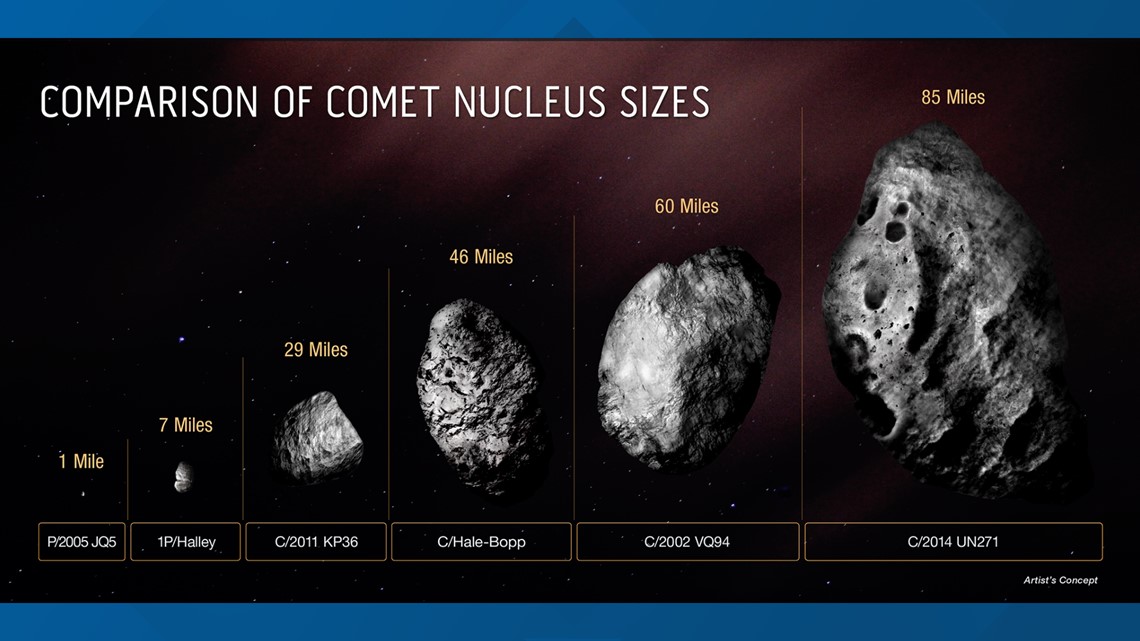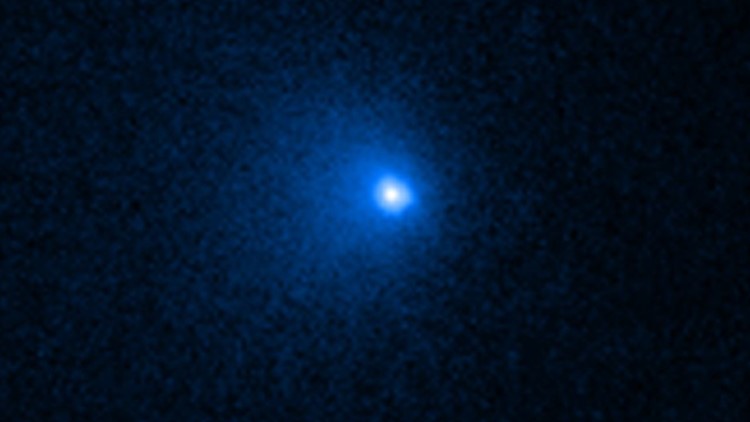GREENBELT, Md. — What weighs 500 trillion tons, has a diameter larger than Rhode Island and is moving at 22,000 miles per hour? The largest comet ever confirmed by astronomers.
You can thank NASA's Hubble Space Telescope for the verification of the behemoth comet named C/2014 UN27. And while it may sound alarming to have a comet of that size in our solar system, experts say it's nothing to worry about.
"[The comet] will never get closer than 1 billion miles away from the Sun, which is slightly farther than the distance of the planet Saturn. And that won't be until the year 2031," NASA wrote.
C/2014 UN27 beat out the previous record-holder named C/2002 VQ94 with an estimated nucleus of 60 miles across, which is 20 miles smaller than C/2014 UN27's nucleus.
"This comet is literally the tip of the iceberg for many thousands of comets that are too faint to see in the more distant parts of the solar system," said David Jewitt, a professor of planetary science and astronomy at the University of California, Los Angeles (UCLA). "We've always suspected this comet had to be big because it is so bright at such a large distance. Now we confirm it is."


The record-breaking comet was discovered by astronomers Pedro Bernardinelli and Gary Bernstein through archival images from the Dark Energy Survey at the Cerro Tololo Inter-American Observatory in Chile.
Ever since the comet was first spotted in November 2010, experts have been "intensively" studying it through ground and space telescopes. That includes Hubble which was tapped to take five photos of the comet in January 2022.
According to a press release, the comet has been falling toward the Sun for more than 1 million years from the "hypothesized nesting ground of trillions of comets" called the Oort Cloud.



